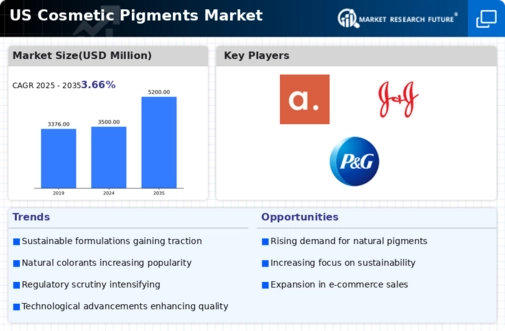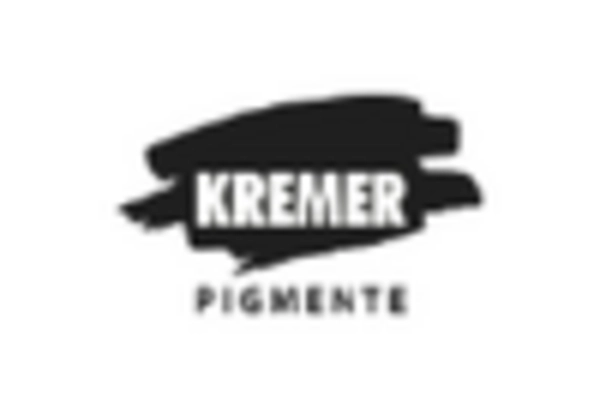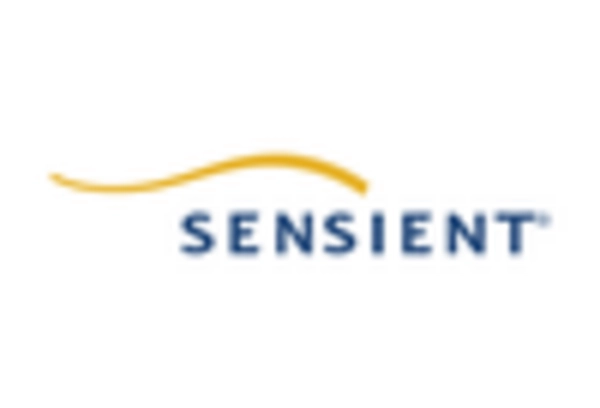Emergence of Customization Trends
Customization is becoming a prominent trend within the cosmetic pigments market, as consumers seek personalized beauty solutions. Brands are increasingly offering customizable products that allow consumers to select specific pigments based on their preferences and skin tones. This trend is particularly evident in the rise of bespoke cosmetic lines, which cater to individual needs and enhance customer engagement. The ability to tailor products is likely to foster brand loyalty and drive sales, as consumers are more inclined to invest in products that resonate with their unique identities. This shift towards personalization may also encourage innovation in pigment formulations, further enriching the cosmetic pigments market.
Expansion of E-commerce Platforms
The rise of e-commerce platforms has significantly transformed the cosmetic pigments market, providing brands with new avenues to reach consumers. Online sales channels have become increasingly popular, accounting for nearly 30% of total cosmetic sales in the US. This shift allows for a broader distribution of products, including niche brands that specialize in unique pigment formulations. The convenience of online shopping, coupled with targeted marketing strategies, enables consumers to access a wider variety of cosmetic pigments. As e-commerce continues to expand, it is likely to drive innovation and competition within the market, encouraging brands to diversify their offerings and enhance product visibility.
Influence of Regulatory Standards
Regulatory standards play a crucial role in shaping the cosmetic pigments market, as they dictate the safety and efficacy of cosmetic products. In the US, the FDA oversees the approval and use of color additives in cosmetics, which directly impacts the types of pigments that can be utilized. Stricter regulations regarding the safety of synthetic pigments have led to a growing interest in natural alternatives. This regulatory landscape not only influences product formulation but also drives research and development efforts within the cosmetic pigments market. Companies are increasingly investing in compliance and innovation to meet these standards, which may enhance consumer trust and market growth.
Rising Demand for Clean Beauty Products
The market is experiencing a notable shift towards clean beauty products, driven by consumer preferences for safer and more environmentally friendly formulations. This trend is reflected in the increasing demand for pigments derived from natural sources, which are perceived as less harmful. According to recent data, the clean beauty segment is projected to grow at a CAGR of approximately 10% over the next five years. As consumers become more aware of the ingredients in their cosmetics, brands are compelled to reformulate their products, thereby influencing the cosmetic pigments market. This shift not only enhances product appeal but also aligns with regulatory pressures for transparency in ingredient sourcing and safety, further propelling the market's growth.
Growing Interest in Sustainable Practices
Sustainability is emerging as a key driver in the cosmetic pigments market, as consumers and brands alike prioritize eco-friendly practices. The demand for sustainably sourced pigments is on the rise, with many companies committing to reducing their environmental footprint. This trend is reflected in the increasing availability of biodegradable and recyclable packaging, as well as the use of renewable resources in pigment production. According to industry estimates, the sustainable cosmetics segment is expected to grow by 15% annually. As consumers become more environmentally conscious, brands that adopt sustainable practices are likely to gain a competitive edge, thereby influencing the overall dynamics of the cosmetic pigments market.

















Leave a Comment